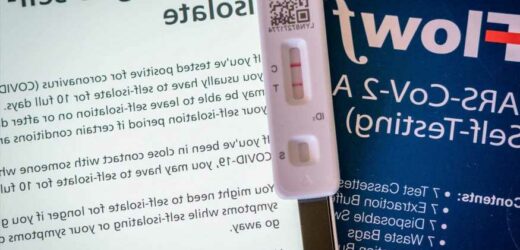COVID self isolation rules have been altered once again, giving people with the virus freedom after five days.
They must test negative on lateral flows in order to come out of isolation – but what happens if they get positive results?
Here we explain everything you need to know…
What are the new self isolation rules?
In a change to self-isolation guidance from January 17, people in England can leave quarantine after five full days, so long as they test negative on days five and six.
But confusing detail means anyone isolating will actually have to do so for six, not five, days.
This is because the first full day of isolation is NOT the day you test positive or noticed symptoms – although you must still isolate following either of these events.
That day is now known as "day zero", with the next day counting as day one, the UK Health Security Agency confirmed.
An example timeline is as follows:
Monday = Day 0 (when you develop symptoms or get a positive test)
Tuesday = Day 1
Wednesday = Day 2
Thursday = Day 3
Friday = Day 4
Saturday = Day 5 – first lateral flow test
Sunday = Day 6 – second lateral flow test and if both are negative you can leave isolation
Most read in Health
HEARTBREAK I was told to ‘lose weight’ to cure fatigue but now I'm fighting for my life
UK daily Covid cases drop 21% in a fortnight as 94,326 new infections reported
The surprising sign in your ears that means you need to test for Omicron now
Omicron in retreat but cases still rising in 174 hotspots – is YOURS on the list?
If you have negative tests but still have a high temperature, you should not come out of self-isolation yet, the Government guidance suggests.
The move is to help with staff shortages over the winter.
The Government says those who leave self-isolation before 10 days are strongly advised to wear face coverings and limit close contact with other people in crowded or poorly ventilated spaces.
They should work from home if they can and minimise contact with anyone who is at higher risk of severe Covid.
The rules have been changed based on a review of evidence.
Research showed that between 20 and 30 per cent of people are still infectious by day six.
But the percentage of those released while infectious falls to around seven per cent if people have two consecutive negative tests and then leave isolation from day six.
What happens if you test positive?
The Department of Health said the default self-isolation period remains 10 days.
People can only end it early if they receive two negative results on consecutive days – the earliest being days five and six.
If they do not test negative, then a negative test is required on day six and day seven to release from isolation.
And so on, until the end of day 10.
The Government does not give clear cut rules for if you are still testing positive following the ten-day isolation period.
But it says: "You can return to your normal routine and stop self-isolating after 10 full days if your symptoms have gone, or if the only symptoms you have are a cough or anosmia [loss of smell], which can last for several weeks.
"If you still have a high temperature after 10 days or are otherwise unwell, stay at home and seek medical advice."
It says “if both your LFD test results are negative, it is likely that you were not infectious at the time the tests were taken” – but does not clarify if you are infectious if tests are positive.
The Centres for Disease Control and Prevention, the US national public health agency, gives a reassuring message.
It says: “Available data suggest that patients with mild-to-moderate Covid-19 remain infectious no longer than 10 days after symptom onset.”
It added that most patients with more severe or critical illness or those who are severely immunocompromised can be infectious for up to 20 days, but likely no more.
The statements mean that, for the large majority, leaving self-isolation with positive lateral flow tests after 10 days is safe.
But there will be a very small number of people who could still be infectious, so it’s up to you if you decide to be a little more cautious while those test results are positive.
For unvaccinated people
For those who do not have a full course of vaccination (two doses), their self-isolation has not changed from the full 10 days.
It means they must stay quarantined for 10 days – starting the day after symptoms started or a positive test – regardless of the results of lateral flow tests.
Source: Read Full Article







